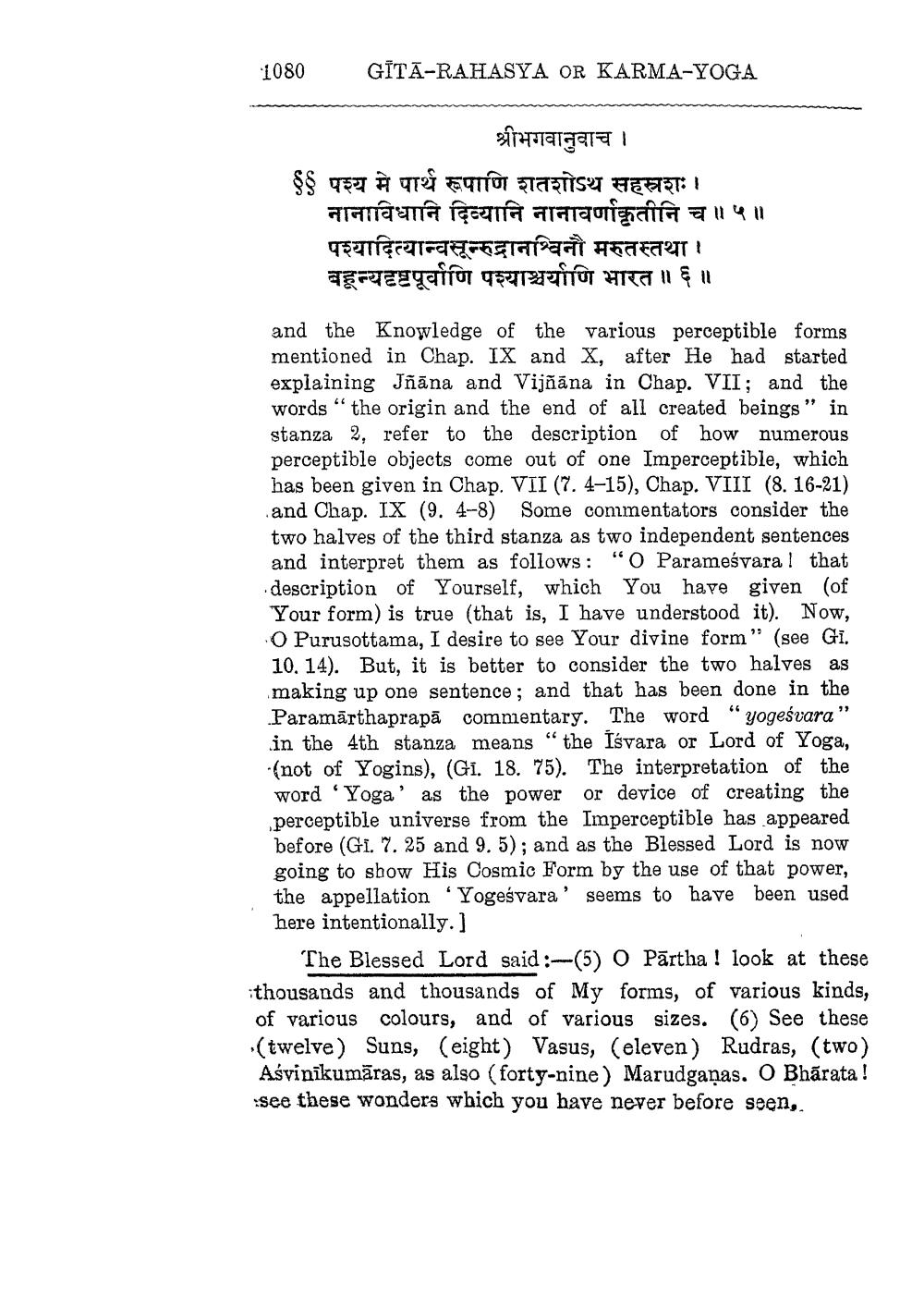________________
1080
GĪTĀ-RAHASYA OR KARMA-YOGA
श्रीभगवानुवाच ।
$$ पश्य मे पार्थ रूपाणि शतशोऽथ सहस्रशः । नानाविधानि दिव्यानि नानावर्णाकृतीनि च ॥ ५ ॥ पश्यादित्यान्वसून्रुद्रानश्विनौ मरुतस्तथा । बहून्यदृष्टपूर्वाणि पश्याश्चर्याणि भारत ॥ ६ ॥
and the Knowledge of the various perceptible forms mentioned in Chap. IX and X, after He had started explaining Jñāna and Vijñāna in Chap. VII; and the words "the origin and the end of all created beings " in stanza 2, refer to the description of how numerous perceptible objects come out of one Imperceptible, which has been given in Chap. VII (7. 4-15), Chap. VIII (8. 16-21) and Chap. IX (9. 4-8) Some commentators consider the two halves of the third stanza as two independent sentences and interpret them as follows: "O Parameśvara! that description of Yourself, which You have given (of Your form) is true (that is, I have understood it). Now, O Purusottama, I desire to see Your divine form" (see Gi. 10. 14). But, it is better to consider the two halves as making up one sentence; and that has been done in the Paramarthaprapa commentary. The word yogeśvara" in the 4th stanza means "the Isvara or Lord of Yoga, (not of Yogins), (Gi. 18. 75). The interpretation of the word 'Yoga' as the power or device of creating the perceptible universe from the Imperceptible has appeared before (GI. 7. 25 and 9. 5); and as the Blessed Lord is now going to show His Cosmic Form by the use of that power, the appellation 'Yogeśvara' seems to have been used here intentionally.]
The Blessed Lord said:- (5) O Partha! look at these thousands and thousands of My forms, of various kinds, of various colours, and of various sizes. (6) See these (twelve) Suns, (eight) Vasus, (eleven) Rudras, (two) Asvinīkumāras, as also (forty-nine) Marudganas. O Bharata! see these wonders which you have never before seen,.




